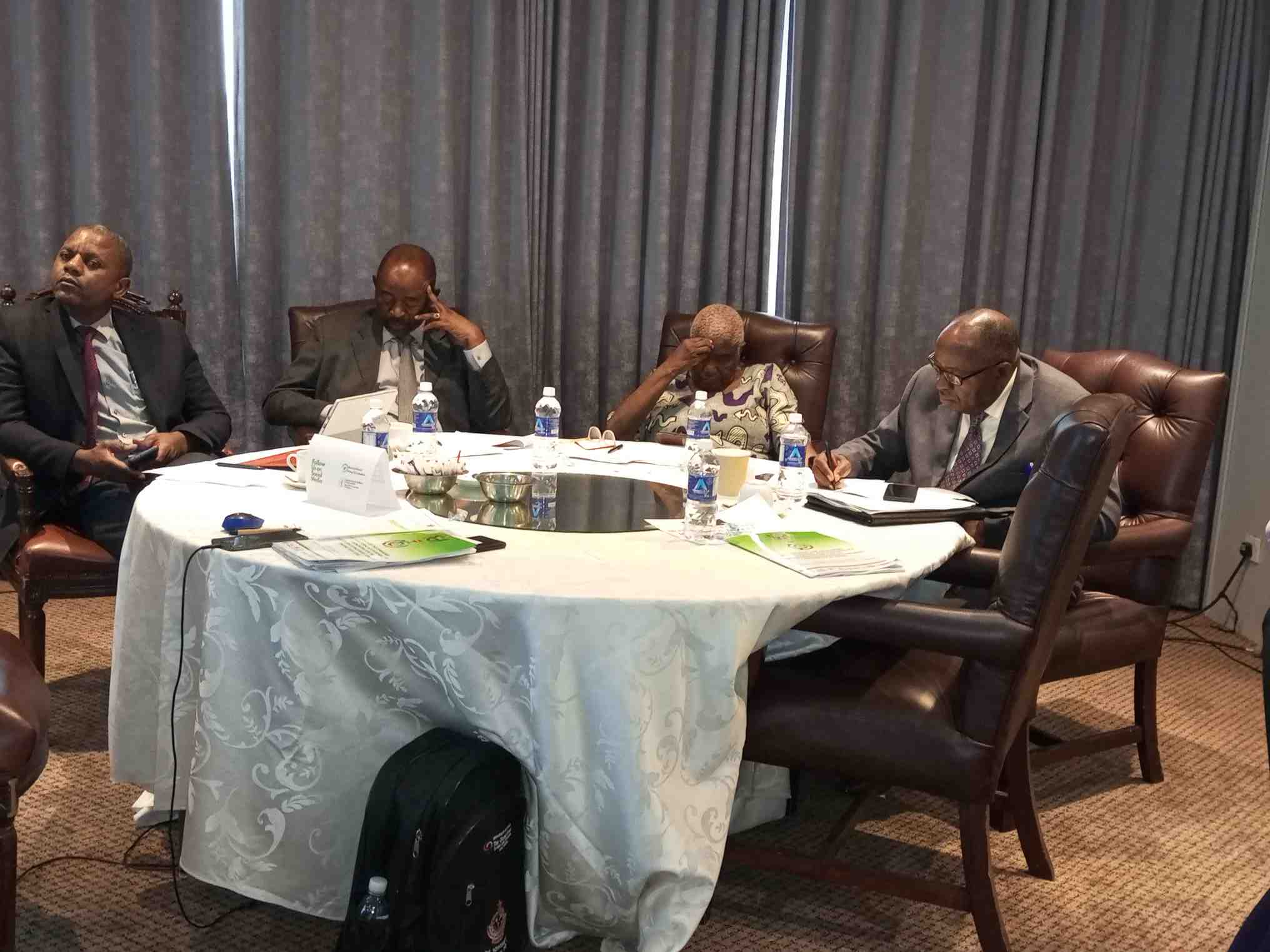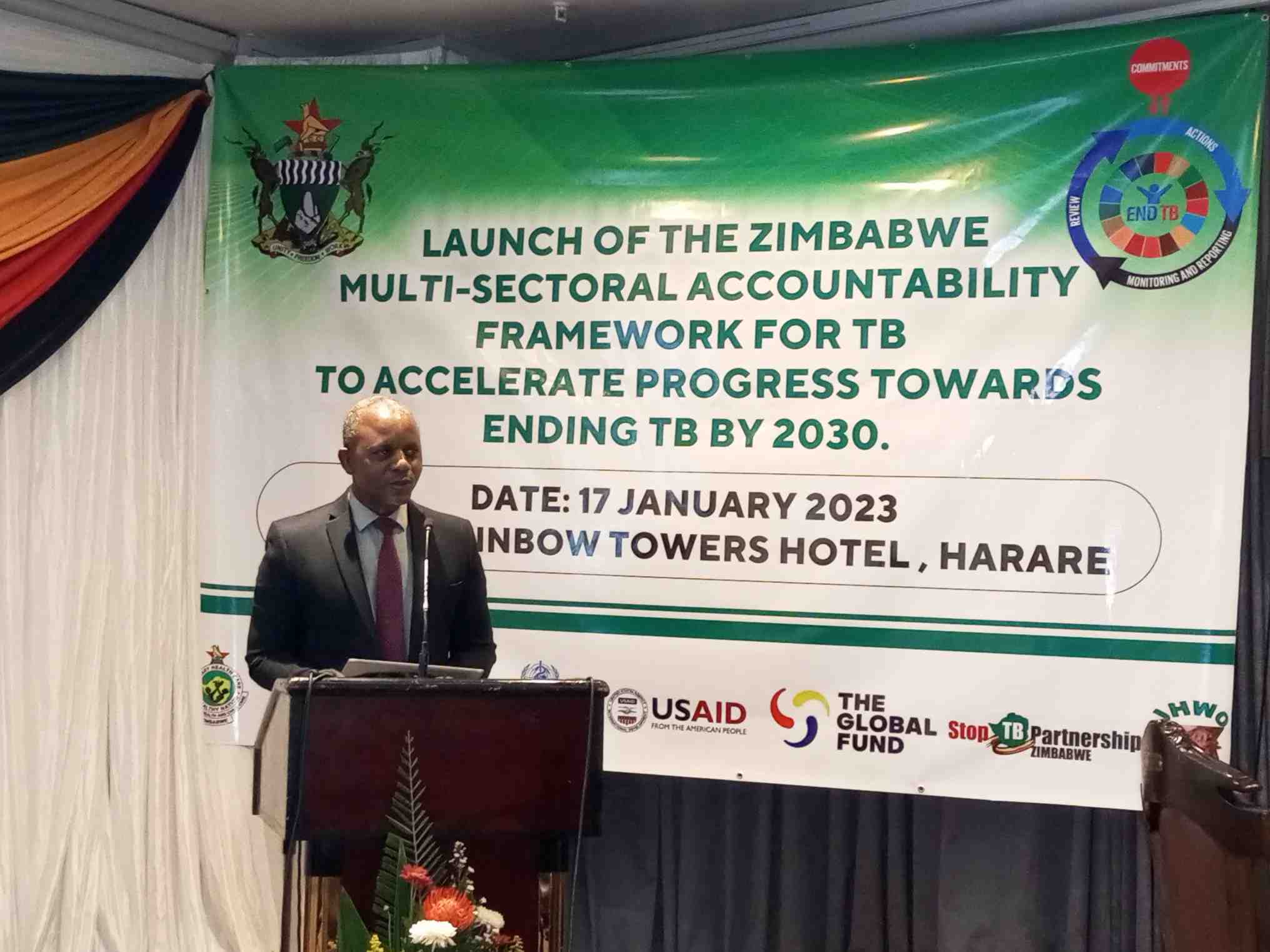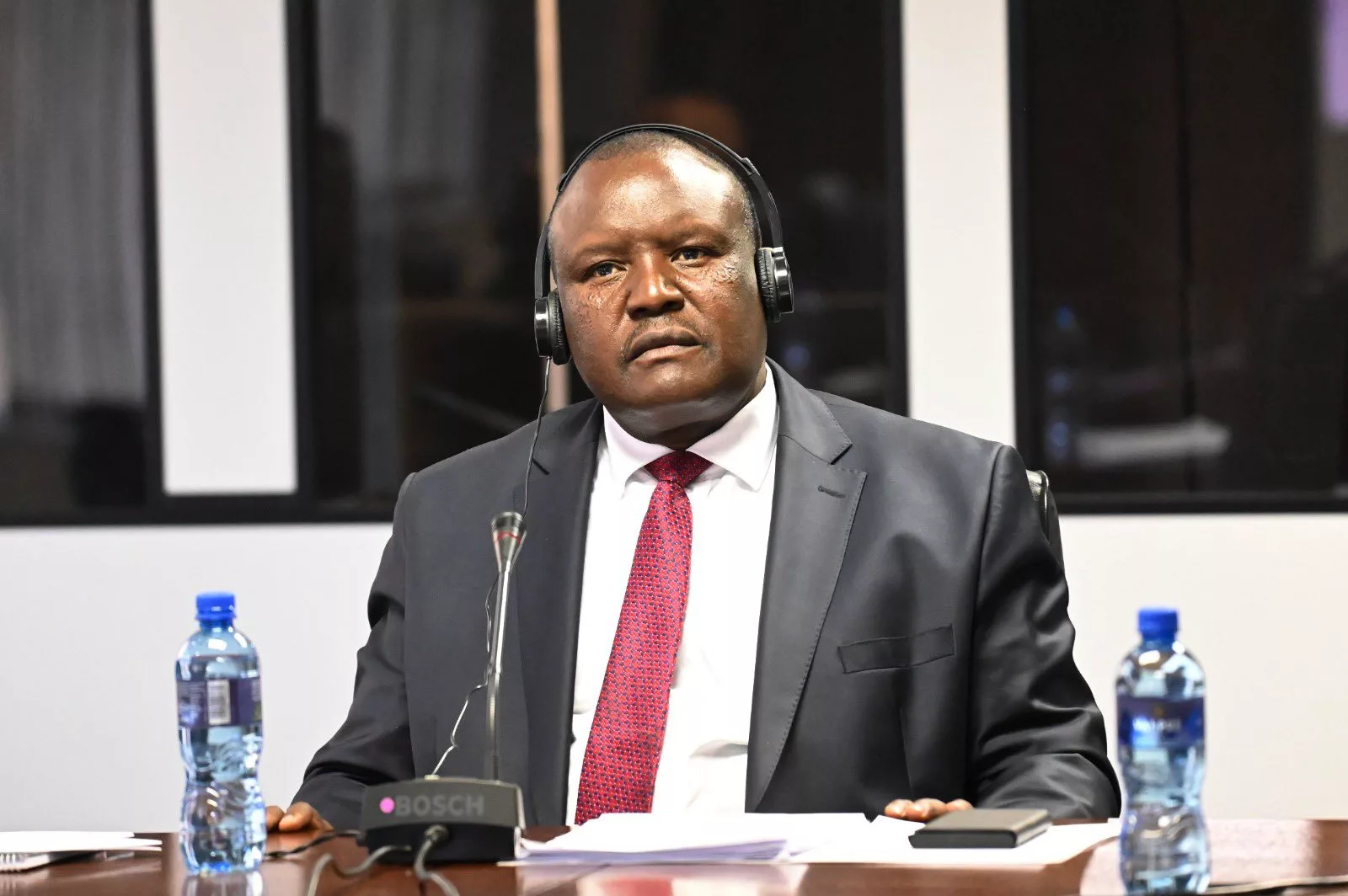|
Getting your Trinity Audio player ready...
|
The Multisectoral Accountability Framework (MAF) for Tuberculosis (TB) is a platform for stakeholders to come together to address gaps and challenges effectively and efficiently in tackling the disease.
Officially launching the multi-stakeholder workshop organised by Jointed Hands Welfare Organisation in Harare today, Chief Director for Public Health in the Ministry of Health and Child Care, Dr. Munyaradzi Dobbie, who was representing the ministry’s Permanent Secretary, Dr. Jasper Chimedza, said TB is a global challenge since it kills more than 1.5 million people each year and affects millions more, with enormous impacts on families and communities.

“Our country Zimbabwe is among the 30 high-burden countries for TB-HIV & MDR TB. The TB epidemic in Zimbabwe is largely HIV-driven with a co-infection rate of 50% with an HIV prevalence of 12,9%. The World Health Organisation (WHO) tells us that TB remains among the top ten leading causes of death in the world. For Zimbabwe, the same is true. Even though TB is preventable and curable, in our country it remains one of the leading causes of death.
“The global End-TB Strategy aims to reduce death rates by 90%, incidence by 80%, and remove catastrophic costs to patients by the year 2030. Ending TB remains a priority for the Ministry of Health and Child Care. In recent years, Zimbabwe invested in TB by adopting innovative tools and strategies aligned with global best practices. These strategies have contributed to sustained gains on key impact and outcome indicators of TB. Consequently, Zimbabwe is among seven high TB burden countries that have achieved the 2020 milestones of a 20% reduction in TB incidence compared to the 2015 baseline,” Dr. Dobbie said.
He said that premised on this great achievement, Zimbabwe was removed from the top 8 countries in Africa on the world’s top 30 lists of countries with the triple burden of TB, TB/HIV, and MDR-TB. However, he said the country remained on the WHO “global TB watch list” for continued attention and support from WHO as a priority country,
Despite these notable milestones, the 2021 Global Tuberculosis report made findings that between 2015 and 2020, TB deaths increased by 36% compared to 2015 (End TB milestone target is 35 reduction by 2020), and there were 8010 deaths in 2020 alone which translates to one person dying every hour.
And about 30,000 new TB cases occur every year, which translates to one person every minute. Despite the high occurrence of new cases, the proportion of new TB cases diagnosed and started on treatment (treatment coverage) decreased from 72% in 2019 to 54% in 2020 thereby promoting ongoing TB transmission at the community level. And currently, 84% of the TB patients who are started on TB treatment are successfully treated. Thus, there are still programmatic gaps in TB case finding, including missed opportunities along the TB screening-diagnosis-care cascade, sub-optimum treatment outcomes, compounded by patient delays in seeking care and lack of treatment adherence support even though 80% of TB patients experience catastrophic costs (End TB target is 0 by 2020).
To address the above TB gaps and challenges effectively and efficiently, Dr. Dobbie said active participation and involvement of all sectors that contribute to health (multi-sectoral approach) are highly needed.
“And finding the 12,520 missing undiagnosed people with TB (who have a multiplier effect of each infecting 10-15 more people annually) and linking them to quality care remains a priority for us,” he said.
He highlighted the key commitments that the government and stakeholders have put into action:
- Finding the undiagnosed people with TB in our communities
- Strengthening of linkage to care, by making sure that patients diagnosed in hospitals and primary health care facilities are linked to quality TB care;
- Strengthening TB Prevention through enhancing TBinfection control measures and treatment of latent tuberculosis, including the use of newer shorter preventive treatment regimens.
- Strengthening multi-sectoral engagement and involvement in the fight against TB in Zimbabwe at all levels is a top priority to accelerate the realization of the End TB goals, milestones and targets.
As he launched the process for Multisectoral Accountability Framework for TB, he urge all relevant ministries, partners and civil society, and all other stakeholders to redouble their efforts to End TB. By implementing Multisectoral Accountability Framework for TB, the hope is to:
- Resuscitate the commitment from multi-sectoral leaders to mobilise resources for TB response
- Raise awareness about Tuberculosis
- Encourage a culture of health-seeking behaviour which then leads to early detection of diseases and timeous initiation on treatment
- Help find the missing people with TB particularly from high-risk communities like miners, informal settlements, prisons, PLHIV (People living with HIV), cross border, and TB contacts
- Raise awareness and help combat TB related stigma and discrimination
The Chief Director emphasised that like all investments in health investments, TB investments will yield significant benefits through lives saved, health care costs averted, and increased productivity.
In giving an overview of the burden of TB in Zimbabwe and highlighting the gaps in relation to TB control, Dr. Fungai Kavhenga, the Acting Deputy Director of the AIDS, and TB unit in the Ministry of Health and Child Care said by 2025, the goal is to have reduced the incidence of all forms of TB by 80% from 242/100000 in 2015 to 48/100 000; and during the same year 2025, to have reduced mortality of all forms of TB by 80% from 40/100000 in 2015 to 8/100 000.
Zimbabwe was moved from the world’s top 30 list of countries heavily burdened by TB. It now has a double burden of TB/HIV and MDR-TB. It now has an HIV prevalence of 12,9% (ZIMPHIA, 2020).
The country has a TB estimated incidence of 190 per 100,000 population in 2020 (Global TB Report, 2022). Treatment coverage was 54% in 2021, decreasing from 72% in 2019 (Global TB Report, 2022). An estimated 12,520 cases were missed in 2021.
Males bear the brunt of the disease burden, particularly the economically productive 25 – 44-year age category. It has a TB/HIV co-infection rate of 50% (Global TB Report, 2022), a drop from 54% in 2021. The Estimated Rifampicin Resistant-TB among new and re-treatment cases are 3.1% and 14% respectively (Global TB Report, 2020). Childhood TB has accounted for 4% of annual notifications in 2018 – 2020.






